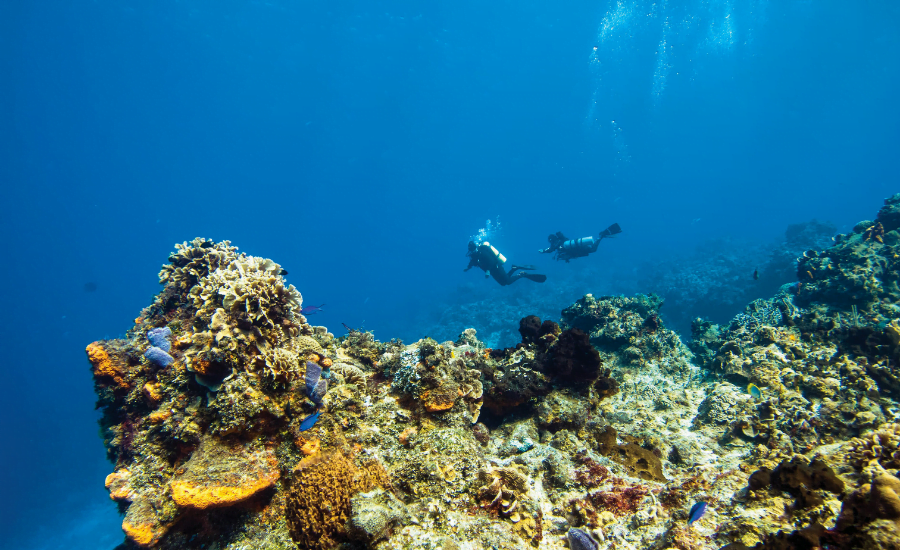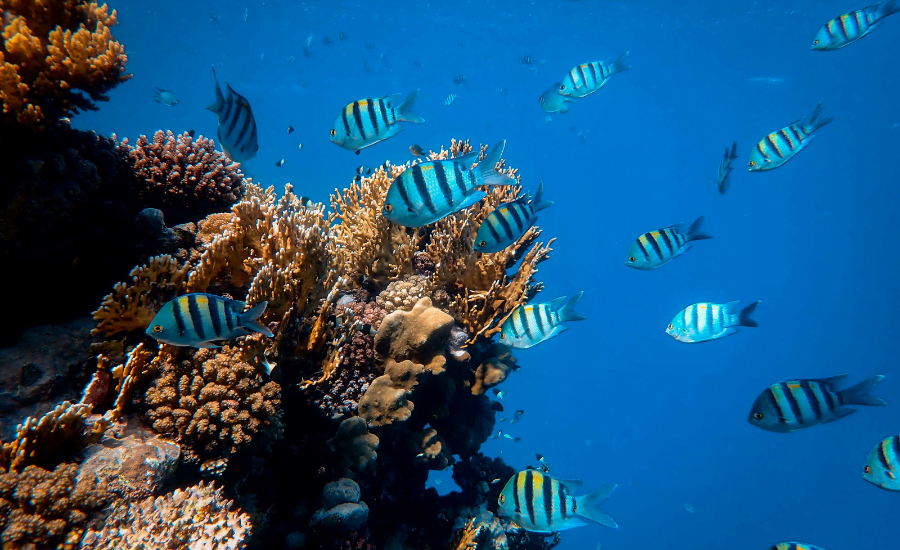
Around the globe, offshore oil rigs hold unexpected allure for divers, snorkelers, and nature enthusiasts. These structures serve as magnets for a diverse array of marine life, ranging from playful sea lions to vibrant corals.
Similar to sunken ships that are intentionally submerged to create artificial reefs. The beams and columns of oil platforms provide shelter and sustenance for underwater ecosystems. Situated far from shore, these rigs are shielded from mainland pollution and fishing pressures, allowing artificial reefs to thrive naturally. While oil drilling carries environmental risks, dismantling decommissioned rigs can disrupt entire ecosystems, making preservation a preferable option.
Although not all diveable platforms are retired, the challenges of oil rig diving. Such as managing open water currents and navigating considerable depths, are often more daunting than the structures themselves. Ken Kollwitz, owner of Channel Islands Diver Adventures in Oxnard, California, attests to the safety of diving around these structures, emphasizing the adherence to strict regulations enforced by boat captains and oil companies. However, with proper precautions, encounters with spills are rare, and responsible diving practices ensure a safe and rewarding experience.
Not only divers but also conservationists worldwide are passionate about repurposing oil rigs into vibrant reefs. In the US, Rigs-to-Reefs initiatives urge oil companies to convert retired rigs into reefs by cutting off their upper sections at Coast Guard-regulated depths. This ensures waterway safety for boats while allowing the reefs to flourish naturally. Subsequent monitoring by research and advocacy groups provides valuable insights to inform future oil rig projects.
The marine consulting firm Blue Latitudes, led by scientist-explorers Emily Callahan and Amber Jackson, actively educates oil company stakeholders globally about the environmental and financial advantages of establishing and sustaining artificial reefs. They also advise companies on the available options for repurposing old rigs into reefs.

Jackson emphasizes the widespread presence of oil platforms across the world’s oceans, underscoring their significant global potential. She notes that the Gulf of Mexico pioneered the Rigs-to-Reefs program, with approximately 500 to 600 platforms already repurposed as reefs. Jackson advocates for this approach to become more prevalent worldwide. Asserting that as all platforms will eventually require decommissioning, there is growing interest in similar programs globally. Callahan and Jackson have personally monitored seven offshore rigs spanning California, the Gulf of Mexico, and Malaysia. In recognition of their conservation endeavors and PADI Women’s Dive Day on July 21, they share insights into some of their favorite sites. And also the marine life they host for those keen to explore beneath the waves.
At this California coast dive site, divers embarking on a journey to the Eureka rig present a dual experience, often encountering more whales and dolphins than those on local whale-watching excursions. However, with depths reaching 720 feet, Eureka holds the distinction of being the deepest oil rig accessible to divers worldwide.
Callahan describes Eureka as one of their preferred dive sites in California, situated miles offshore amidst the vast expanse of the ocean. This imposing structure serves as a habitat for numerous species typically found near California’s rocky reefs. Including sea lions, the garibaldi (California’s state saltwater fish), blacksmiths, and a plethora of other marine life.
Located within the Flower Garden Banks National Marine Sanctuary in the Gulf of Mexico, Platform HI-A-376 stands as a beacon of marine biodiversity in one of the Caribbean and Gulf’s most vibrant reef ecosystems. Situated 98 nautical miles away from Galveston. This sanctuary boasts a thriving underwater realm teeming with a diverse array of colorful fish species. For underwater photographers, Platform HI-A-376 offers a captivating backdrop adorned with photogenic blue angelfish and bustling schools of horse-eye jacks.
Explore the underwater wonders of the retired Seaventures Dive Rig, now a PADI five-star dive resort, situated near Sipadan, Malaysia. Here, divers can indulge in a unique experience by sleeping and diving in the same location. With accommodations, dining options, and a full-service dive shop, Seaventures Dive Rig offers dive packages starting from $433 for three days and two nights. Dive enthusiasts can venture out to explore the resort’s house reef during the day or night. Spots elusive critters like frogfish and pygmy seahorses amidst the rig’s beams. After a rewarding day of diving, guests can unwind and enjoy the sunset on the sundeck.

Meanwhile, Platform C in Santa Barbara, California, holds promise as a future dive site, eagerly anticipated by local divers. Nestled in the Santa Barbara Channel just 5.7 miles from shore, Platform C offers a maximum depth of 192 feet, catering to both tech divers and recreational enthusiasts. Expect to encounter a vibrant marine ecosystem thriving at various depths.
To experience these dive sites firsthand, it’s essential to book a trip with a reputable charter company. Lastly, anchoring or tying up to oil rigs is prohibited due to conservation and safety regulations. Opt for a charter that offers group trips and ensures a safe journey. With the added bonus of whale watching along the way.










